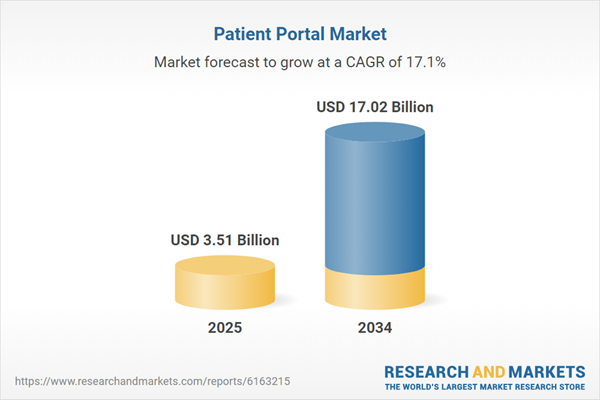Patient Portal: Introduction
Patient portals are healthcare solutions in the form of software tools that are developed to help patients keep track of their own health information by engaging in one-on-one conversations with healthcare professionals. It has been getting increased emphasis lately due to the ease and convenience they provide to handle a patient's data without getting worked up and lesser time. With the help of these portals, a patient can easily keep track of their own health status. There are multiple features that are provided by these portals personalize communication tools, easy transactions for hospital facilities and services, bill payments, appointment management, health education and resources.The introduction of patient portals has revolutionized the way patients engage with their healthcare. With the presence of patient portals, patients can actively manage their health by accessing important information. By offering a centralized platform for health-related activities, patient portals enhance communication and collaboration between patients and their healthcare providers.
Patients are able to communicate with their doctors without worrying about data security, ask questions, seek clarification on treatment plans, and receive timely response. They provide educational resources, personalized reminders, and recommendations to prevent some medical conditions that enables patients to make informed decisions and actively participate in managing their well-being. With continuously advancing technology, patient portals are expected to play an increasingly crucial role in healthcare delivery.
Global Patient Portal Market Analysis
The several key trends running in the patient portal market include easy mobile access that is provided by these portals, as easy to use mobile applications makes it much easier to access to the patient data. Connectivity features that enable them to integrate with wearable devices, such as smart phones and smart watches, to keep track of real time data for better data analysis. Interoperability, personalization, and patient specific features as educational resources about particular health conditions, recommendations based on current health condition of patient are also major trends propelling the global patient portal market expansion.Better user experience of portals to make them super user friendly and visually appealing are the trends propelling the patient portal market growth. The interoperability features between patient portals and other healthcare systems are a significant focus in the market due to which several efforts by the manufacturers are being made to provide seamless data exchange between different healthcare providers, pharmacies, and laboratories, allowing patients to have a comprehensive view of their health information regardless of the care setting.
Global Patient Portal Market Segmentations
Patient Portal Market Report and Forecast 2025-2034 offers a detailed analysis of the market based on the following segments:Market Breakup by Portal
- Integrated Patient Portal
- Standalone Patient Portal
Market Breakup by Deployment Mode
- Web based
- Cloud based
Market Breakup by End User
- Hospitals and Surgical Centres
- Pharmacies
- Other End Users
Market Breakup by Region
- North America
- Europe
- Asia Pacific
- Latin America
- Middle East and Africa
Global Patient Portal Market Overview
The market is witnessing gradual growth and is expected to continue growing in coming years as well. Patient portals have been getting popular lately due to the increased emphasis on convenience they provide to handle a patient's data. The market is driven by several factors such as rising awareness among people about their health, along with the growing focus on patient engagement with their own data.Additionally, the increased involvement of electronic health records EHR by healthcare organizations to enable their patients to be able to fetch data from single platform rather than visiting multiple portals is continuously contributing to the market growth. Increasing appreciation towards the engagement of patient with their own data is increasing the development of better patient portals to help them even more and understand their requirements of treatment and disorders much better.
Patient Portal Market: Competitor Landscape
The key features of the market report include patent analysis, grants analysis, clinical trials analysis, funding and investment analysis, partnerships, and collaborations analysis by the leading key players. The major companies in the market are as follows:- Allscripts Healthcare Solutions
- AtenaHealth Inc.
- Cerner Corporation
- Curemd Healthcare
- Eclinical works LLC.
- Epic Corporation Inc.
- GE Healthcare
- Greenway Health LLC
- Intelichart
- Nextgen Healthcare Information systems LLC
This product will be delivered within 3-5 business days.
Table of Contents
Companies Mentioned
- Allscripts Healthcare Solutions
- AtenaHealth Inc.
- Cerner Corporation
- Curemd Healthcare
- Eclinical works LLC.
- Epic Corporation Inc.
- GE Healthcare
- Greenway Health LLC
- Intelichart
- Nextgen Healthcare Information systems LLC
Table Information
| Report Attribute | Details |
|---|---|
| No. of Pages | 350 |
| Published | July 2025 |
| Forecast Period | 2025 - 2034 |
| Estimated Market Value ( USD | $ 3.51 Billion |
| Forecasted Market Value ( USD | $ 17.02 Billion |
| Compound Annual Growth Rate | 17.1% |
| Regions Covered | Global |
| No. of Companies Mentioned | 10 |









